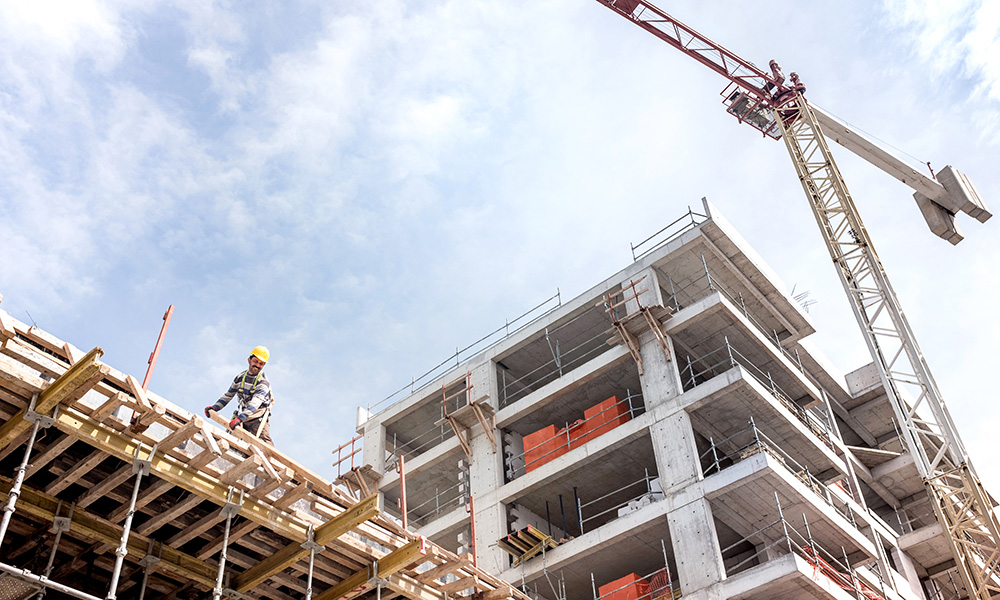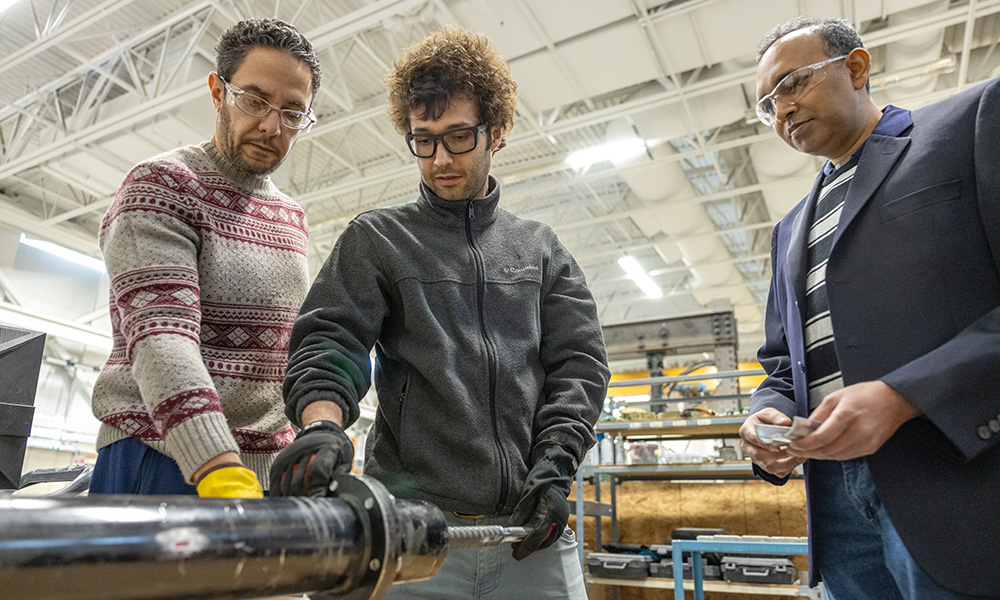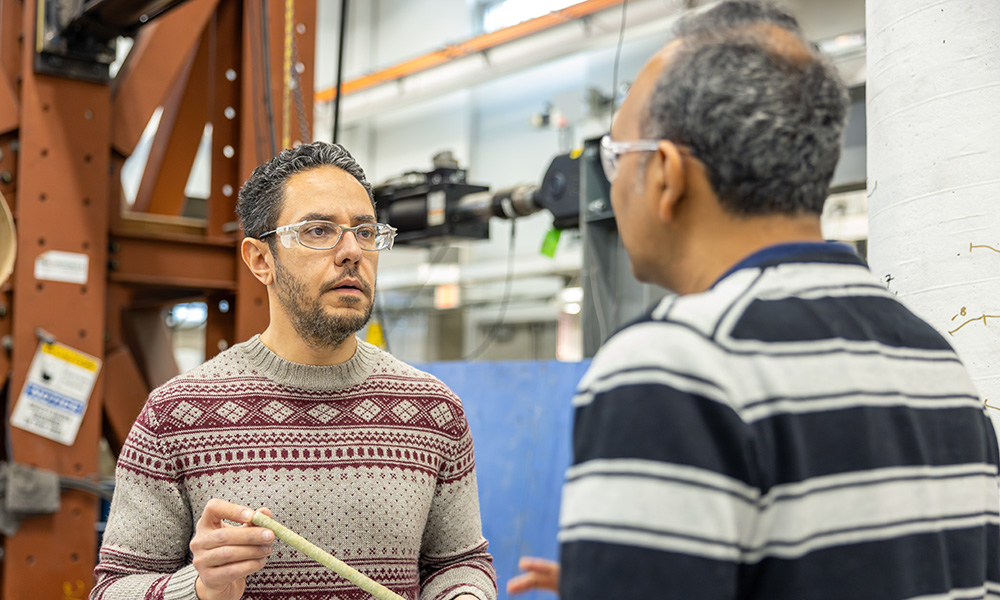
Dr. Shahria Alam in his Applied Laboratory for Advanced Materials and Structures.
When it comes to climate change, it’s easy to believe that the burning of fossil fuels is mainly responsible for high global carbon emissions. We’re told we need to drive less, fly less and generally rely less on the non-renewable energy sources that have sustained our society’s way of life for over a century.
However, the reality is that half of current carbon emissions come from the mining industry, with the emissions from extracting non-metallic minerals (think sand, clay and gravel) trending upwards over the past 15 years. In fact, demand for concrete is so high that the sand used for it is running out.
What’s even more troubling is that when buildings and other infrastructure have passed their usable lifespan, they’re demolished—releasing what’s called embodied carbon. That’s the total energy invested in a building, from the original extraction of natural resources to its manufacturing, transportation and final construction.

When construction happens it’s often good news for the economy, but what about the environmental cost? It’s estimated that approximately four million tonnes of construction materials are sent to Canadian landfills annually, representing 1.8 million tonnes of embodied carbon.
“In the end, we’re taking limited resources from the Earth, using them and then burying them in a landfill where construction waste doesn’t break down,” explains Dr. Shahria Alam, a Professor of Civil Engineering at UBC Okanagan and Director of the Green Construction Research and Training Centre at UBC.
“The whole process adds additional carbon to the atmosphere, and on top of that, we’re using new resources and more carbon to fill the void of what was demolished.
“It’s not a sustainable way of managing Earth’s finite resources.”
In Canada, approximately four million tonnes of construction materials are sent to landfill annually, representing 1.8 million tonnes of embodied carbon. To put that in perspective, it would take nearly 30 million tree seedlings growing for 10 years to sequester the same volume of emissions.

Dr. Shahria Alam (right) observes as Dr. Sherif Osman (left) and Dr. Ahmad Rahmzadeh (middle) complete the fabrication of a self-centering damper. These can be installed in buildings or bridges to reduce permanent damage, while also helping to self-centre the structure during an earthquake.
Decreasing the carbon footprint of construction
Dr. Alam believes part of the solution lies in employing more sustainable construction practices, which he’s exploring in his Applied Laboratory for Advanced Materials and Structures.
There, he and his research team subject various materials to herculean forces in an attempt to see what fails precisely where and when. They mix concrete with various wastes coming from industries and renewable energy sources to test durability, explore alternative reinforcing materials and generally devise ways to reduce damage to structures, preventing these materials from ending up in landfills.
The lab explores recycling resources like tires and demolished concrete into new, more sustainable materials, as well as using alternative cement like wood fly ash in concrete. It also looks into how “smart” materials can be incorporated into new and existing construction. Such materials can respond to changes in their condition or environment, better ensuring a building’s longevity in the face of a calamity.
“Take the example of an earthquake, which can significantly damage buildings and infrastructure to the point they need to be demolished and added to our landfills,” Dr. Alam says. “That’s a significant amount of carbon emissions with the demolition and reconstruction.

Dr. Sherif Osman (left) with Dr. Shahria Alam.
“But what if you could avoid that kind of damage, demolition and reconstruction in the first place? That’s why we’re exploring structural systems that will self-centre after any hazard. Using this kind of smart material has the potential to save a significant number of carbon emissions.”
For Dr. Alam, anything his team of researchers can do to resonate with the wider world is important—a value ingrained in him since he was a child growing up in Bangladesh.
“We always lived in fear of a big earthquake; because of that, I resolved to become an engineer so that one day I could help build technologies to protect lives and structures.
“That’s still true today. I believe that given all the natural and manufactured resources that go into creating our infrastructure, it should last many generations.
“Ultimately, climate change will demand it.”